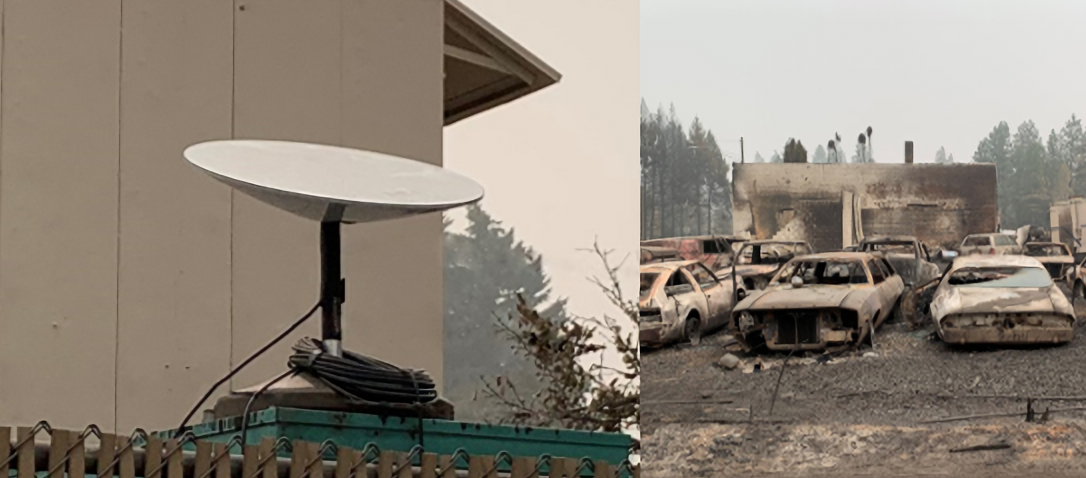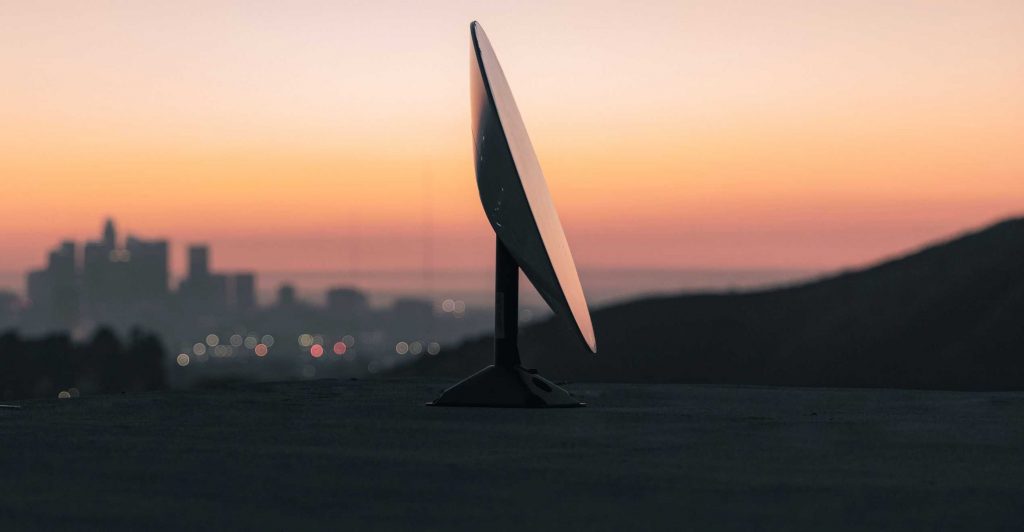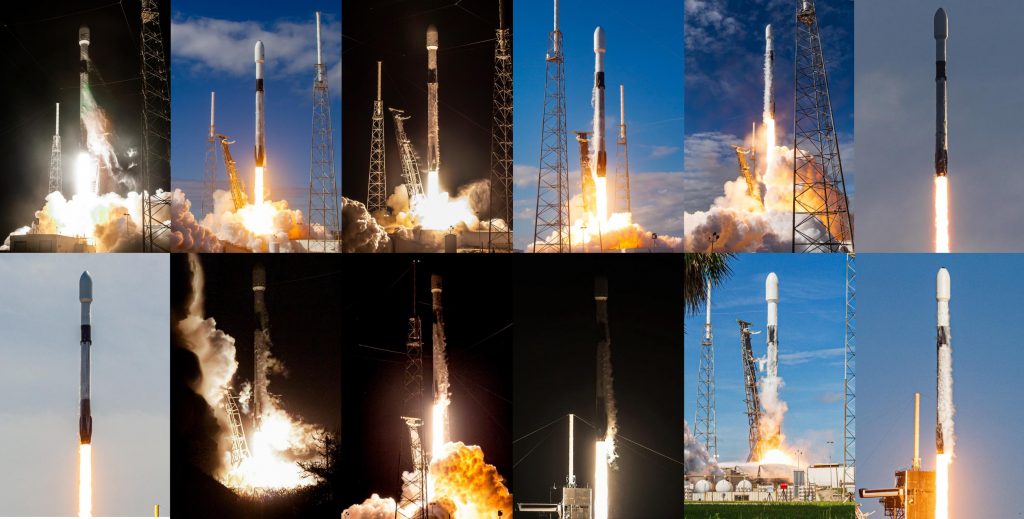

News
SpaceX lends Starlink to Washington emergency services as Elon Musk talks IPO
SpaceX has provided Washington’s Emergency Management department access to Starlink satellite internet service in a bid to support the state’s emergency response to dangerous wildfires.
Though the customer is technically a military department, this is the first public announcement of the internet constellation’s use in a civil service-oriented role. In the case of Malden, WA, a tiny eastern town with roughly 200 residents, a wildfire broke out in the first week of September and all but destroyed every building in a matter of hours. No fatalities have been recorded but the town and all its critical services effectively ceased to exist by the time the first passed through.
Given the sheer scale of fire damage Washington state has suffered this summer, Malden – without power or many other utilities after the fire passed through – is likely being held together with the support of emergency services departments like WA Emergency Management. Now, with SpaceX’s help, that likely includes the ability to provide some limited internet service – perhaps in a communal center or shelter – without spending an unreasonable portion of the precious little resources most emergency response agencies have to work with.

While still firmly in the development and prototype phase, SpaceX has begun to gradually expand the scope of its beta testing as the Starlink constellation expands, building off of an already strong relationship with the US military. That helps explain why, of so many possible civil recipients, WA Emergency Management – a military department – has received access to Starlink internet services first.
As SpaceX has made sure to reiterate during its many Starlink launch webcasts, the constellation’s main target demographics are those in regions that either completely or practically lack access to reliable internet. With a low Earth orbit (LEO) constellation like Starlink, SpaceX could feasibly deliver reliable, uninterrupted internet almost anywhere on Earth, so long as a prospective user has access to enough power to run their user terminal (antenna/router). According to SpaceX’s FCC application for said terminal, A/C power input requirements should never climb above 2.5 amps from a normal 100-240v outlet.
Ultimately, the second planned phase of Starlink will see the constellation grow to a point that SpaceX can seriously begin competing with ground-based ISPs – even in densely-populated areas. For now, though, the company has made it clear that the first phase – at least several thousand satellites -will primarily focus on connecting the unconnected and substantially upgrading the capabilities of emergency responders around the world.

Confirming President/COO Gwynne Shotwell’s February 2020 comments on a possible Starlink IPO, CEO Elon Musk reiterated that SpaceX may eventually spin off Starlink and make the company public, “but only several years in the future.” This is far from surprising, as Musk has consistently expressed disdain for the challenge of running Tesla as a public company, going so far as getting himself in hot legal water in an ill-fated attempt to take the company private in 2018.
Going public is possibly the single worst thing SpaceX or any SpaceX spin-off could do, given that shareholders generally have a single goal in mind: reliable profit and reliable growth. That attitude is generally the death knell for high-uncertainty R&D programs pursuing the first low Earth orbit Internet satellite constellation, reusable orbital-class rockets, 100-person Starships, or bases on the Moon and Mars. As such, Musk notes that SpaceX will consider taking Starlink public – but if and only if Starlink reaches a point where “revenue growth is smooth & predictable.” Shotwell and Musk, in other words, are on the same page.
Check out Teslarati’s Marketplace! We offer Tesla accessories, including for the Tesla Cybertruck and Tesla Model 3.

Elon Musk
Elon Musk’s X will start using a Tesla-like software update strategy
The initiative seems designed to accelerate updates to the social media platform, while maintaining maximum transparency.

Elon Musk’s social media platform X will adopt a Tesla-esque approach to software updates for its algorithm.
The initiative seems designed to accelerate updates to the social media platform, while maintaining maximum transparency.
X’s updates to its updates
As per Musk in a post on X, the social media company will be making a new algorithm to determine what organic and advertising posts are recommended to users. These updates would then be repeated every four weeks.
“We will make the new 𝕏 algorithm, including all code used to determine what organic and advertising posts are recommended to users, open source in 7 days. This will be repeated every 4 weeks, with comprehensive developer notes, to help you understand what changed,” Musk wrote in his post.
The initiative somewhat mirrors Tesla’s over-the-air update model, where vehicle software is regularly refined and pushed to users with detailed release notes. This should allow users to better understand the details of X’s every update and foster a healthy feedback loop for the social media platform.
xAI and X
X, formerly Twitter, has been acquired by Elon Musk’s artificial intelligence startup, xAI last year. Since then, xAI has seen a rapid rise in valuation. Following the company’s the company’s upsized $20 billion Series E funding round, estimates now suggest that xAI is worth tens about $230 to $235 billion. That’s several times larger than Tesla when Elon Musk received his controversial 2018 CEO Performance Award.
As per xAI, the Series E funding round attracted a diverse group of investors, including Valor Equity Partners, Stepstone Group, Fidelity Management & Research Company, Qatar Investment Authority, MGX, and Baron Capital Group, among others. Strategic partners NVIDIA and Cisco Investments also continued support for building the world’s largest GPU clusters.
News
Tesla FSD Supervised wins MotorTrend’s Best Driver Assistance Award
The decision marks a notable reversal for the publication from prior years, with judges citing major real-world improvements that pushed Tesla’s latest FSD software ahead of every competing ADAS system.

Tesla’s Full Self-Driving (Supervised) system has been named the best driver-assistance technology on the market, earning top honors at the 2026 MotorTrend Best Tech Awards.
The decision marks a notable reversal for the publication from prior years, with judges citing major real-world improvements that pushed Tesla’s latest FSD software ahead of every competing ADAS system. And it wasn’t even close.
MotorTrend reverses course
MotorTrend awarded Tesla FSD (Supervised) its 2026 Best Tech Driver Assistance title after extensive testing of the latest v14 software. The publication acknowledged that it had previously criticized earlier versions of FSD for erratic behavior and near-miss incidents, ultimately favoring rivals such as GM’s Super Cruise in earlier evaluations.
According to MotorTrend, the newest iteration of FSD resolved many of those shortcomings. Testers said v14 showed far smoother behavior in complex urban scenarios, including unprotected left turns, traffic circles, emergency vehicles, and dense city streets. While the system still requires constant driver supervision, judges concluded that no other advanced driver-assistance system currently matches its breadth of capability.
Unlike rival systems that rely on combinations of cameras, radar, lidar, and mapped highways, Tesla’s FSD operates using a camera-only approach and is capable of driving on city streets, rural roads, and freeways. MotorTrend stated that pure utility, the ability to handle nearly all road types, ultimately separated FSD from competitors like Ford BlueCruise, GM Super Cruise, and BMW’s Highway Assistant.
High cost and high capability
MotorTrend also addressed FSD’s pricing, which remains significantly higher than rival systems. Tesla currently charges $8,000 for a one-time purchase or $99 per month for a subscription, compared with far lower upfront and subscription costs from other automakers. The publication noted that the premium is justified given FSD’s unmatched scope and continuous software evolution.
Safety remained a central focus of the evaluation. While testers reported collision-free operation over thousands of miles, they noted ongoing concerns around FSD’s configurable driving modes, including options that allow aggressive driving and speeds beyond posted limits. MotorTrend emphasized that, like all Level 2 systems, FSD still depends on a fully attentive human driver at all times.
Despite those caveats, the publication concluded that Tesla’s rapid software progress fundamentally reshaped the competitive landscape. For drivers seeking the most capable hands-on driver-assistance system available today, MotorTrend concluded Tesla FSD (Supervised) now stands alone at the top.
News
Elon Musk’s Grokipedia surges to 5.6M articles, almost 79% of English Wikipedia
The explosive growth marks a major milestone for the AI-powered online encyclopedia, which was launched by Elon Musk’s xAI just months ago.

Elon Musk’s Grokipedia has grown to an impressive 5,615,201 articles as of today, closing in on 79% of the English Wikipedia’s current total of 7,119,376 articles.
The explosive growth marks a major milestone for the AI-powered online encyclopedia, which was launched by Elon Musk’s xAI just months ago. Needless to say, it would only be a matter of time before Grokipedia exceeds English Wikipedia in sheer volume.
Grokipedia’s rapid growth
xAI’s vision for Grokipedia emphasizes neutrality, while Grok’s reasoning capabilities allow for fast drafting and fact-checking. When Elon Musk announced the initiative in late September 2025, he noted that Grokipedia would be an improvement to Wikipedia because it would be designed to avoid bias.
At the time, Musk noted that Grokipedia “is a necessary step towards the xAI goal of understanding the Universe.”
Grokipedia was launched in late October, and while xAI was careful to list it only as Version 0.1 at the time, the online encyclopedia immediately earned praise. Wikipedia co-founder Larry Sanger highlighted the project’s innovative approach, noting how it leverages AI to fill knowledge gaps and enable rapid updates. Netizens also observed how Grokipedia tends to present articles in a more objective manner compared to Wikipedia, which is edited by humans.
Elon Musk’s ambitious plans
With 5,615,201 total articles, Grokipedia has now grown to almost 79% of English Wikipedia’s article base. This is incredibly quick, though Grokipedia remains text-only for now. xAI, for its part, has now updated the online encyclopedia’s iteration to v0.2.
Elon Musk has shared bold ideas for Grokipedia, including sending a record of the entire knowledge base to space as part of xAI’s mission to preserve and expand human understanding. At some point, Musk stated that Grokipedia will be renamed to Encyclopedia Galactica, and it will be sent to the cosmos.
“When Grokipedia is good enough (long way to go), we will change the name to Encyclopedia Galactica. It will be an open source distillation of all knowledge, including audio, images and video. Join xAI to help build the sci-fi version of the Library of Alexandria!” Musk wrote, adding in a later post that “Copies will be etched in stone and sent to the Moon, Mars and beyond. This time, it will not be lost.”








